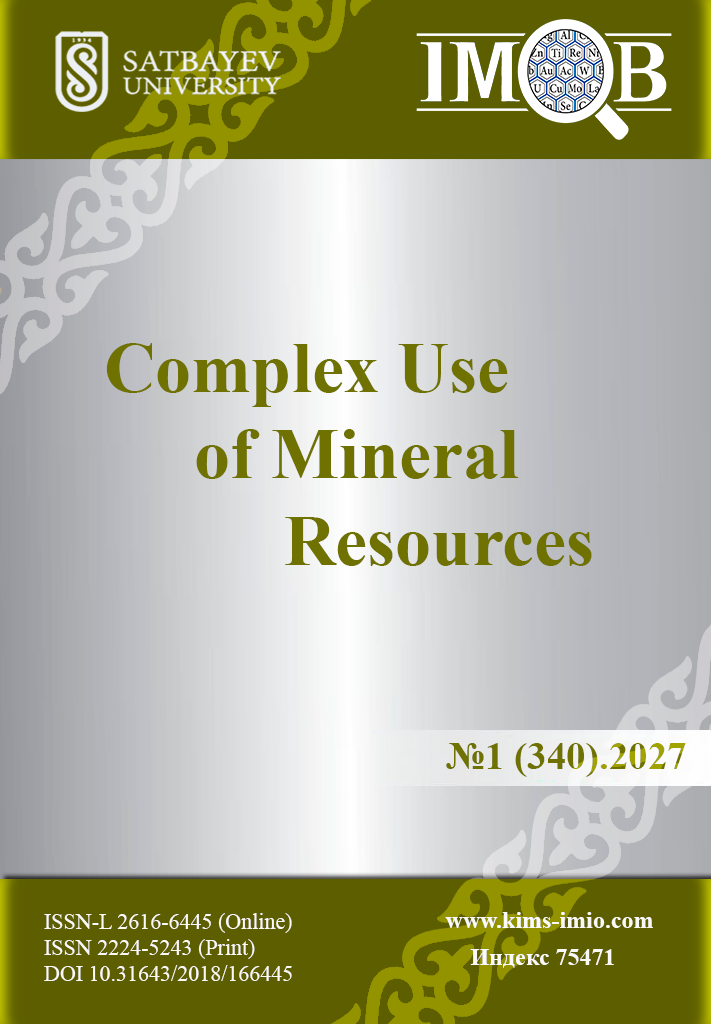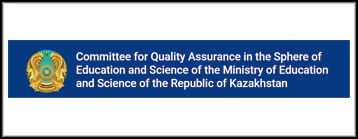Influence of additives and temperature regime on the setting kinetics and strength of foamed concrete
DOI:
https://doi.org/10.31643/2027/6445.01Keywords:
Foam concrete, fast-hardening, lightweight concrete, additives, temperature, ash, waste.Abstract
The article presents the results of the development of the physico-mechanical characteristics of fast-setting lightweight concrete. Based on the obtained data, it was concluded that the use of metal cassette molds in foam concrete technology is ineffective. Their turnover can be increased by heating the floor in the workshop and insulating the sides and surfaces of the molds. However, the high cost of energy carriers increases the material's production cost and reduces its competitiveness. At ambient temperatures below 16 °C, it is advisable to use insulated wooden molds, which help retain the heat released during cement hydration. The optimal mold dimensions (1.2 × 1.25 × 0.5 m and 1.2 × 1.25 × 0.6 m) were selected based on cutting technology capabilities. The formation of large monolithic masses is associated with the risk of cracks and even structural rupture due to uneven heat distribution. To maintain the initial mix temperature within 22 – 25 °C, the molding mixture should be prepared using water heated to 30 °C. In insulated wooden molds, the formed material retains a temperature of at least 18 – 20 °C before the onset of hydration. Then, due to the exothermic reaction of cement, the temperature remains stable until demolding. Improvements in natural-setting foam concrete technology have demonstrated the feasibility of introducing a chemically active siliceous component into the mixture. This component binds free Ca(OH)₂ released during alite hydration, contributing to long-term strength development. Research objective – The development of effective methods to accelerate the early-stage hardening of foamed concrete by studying the influence of electrolyte additives and surfactants on the setting and hardening processes of cement paste. The novelty of work lies in establishing patterns in the formation of physical and mechanical properties of foamed concrete with accelerated initial hardening, taking into account its porous structure, and the characteristics of the hardening process.
Downloads
References
Chica L, Alzate A. Cellular concrete review: New trends for application in construction. Constr. Build. Mater. 2019; 200:637-647. https://doi.org/10.1016/j.conbuildmat.2018.12.136
Zhou G, Su RKL. A Review on Durability of Foam Concrete. Buildings. 2023; 13:1880. https://doi.org/10.3390/buildings13071880
Raj A, Sathyan D, Mini K. Physical and functional characteristics of foam concrete: A review. Constr. Build. Mater. 2019; 221:787-799. https://doi.org/10.1016/j.conbuildmat.2019.06.052
Zhang S, Qi X, Guo S, Zhang L, Ren J. A systematic research on foamed concrete: The effects of foam content, fly ash, slag, silica fume and water-to-binder ratio. Construction and Building Materials. 2022; 339:127683. https://doi.org/10.1016/j.conbuildmat.2022.127683
Amran YM, Farzadnia N, Ali AA. Properties and applications of foamed concrete; a review. Construction and Building Materials. 2015; 101:990-1005. https://doi.org/10.1016/j.conbuildmat.2015.10.112
Jones M, McCarthy A. Preliminary views on the potential of foamed concrete as a structural material. Magazine of Concrete Research. 2005; 57:21-31. https://doi.org/10.1680/macr.2005.57.1.21
Lukpanov R, Dyussembinov D, Yenkebayev S, Yenkebayeva A, Tkach E. Additive for improving the quality of foam concrete made on the basis of micro silica and quicklime. Kompleksnoe Ispolzovanie Mineralnogo Syra = Complex Use of Mineral Resources. 2022; 323(4):30-37. https://doi.org/10.31643/2022/6445.37
Ramamurthy K, Kunhanandan Nambiar EK. A classification of studies on properties of foam concrete. Cement and Concrete Composites. 2009; 31(6):388-396. https://doi.org/10.1016/j.cemconcomp.2009.04.006
Dyussembinov D, Lukpanov R, Altynbekova A, Zhantlesova Z, & Awwad T. Effect of soapstock in the composition of modified additive for improving strength characteristics of concrete structures. Kompleksnoe Ispolzovanie Mineralnogo Syra = Complex Use of Mineral Resources. 2024; 334(3):37-50. https://doi.org/10.31643/2025/6445.26
Kunhanandan Nambiar EK, Ramamurthy K. Influence of filler type on the properties of foam concrete. Cement and Concrete Composites. 2006; 28(5):475-480. https://doi.org/10.1016/j.cemconcomp.2005.12.001
Hilal AA, Thom NH, Dawson AR. On void structure and strength of foamed concrete made without-with additives. Construction and Building Materials. 2015; 85:157-164. https://doi.org/10.1016/j.conbuildmat.2015.03.093
She W, Du Y, Zhao G, Feng P, Zhang Y, Cao X. Influence of coarse fly ash on the performance of foam concrete and its application in high-speed railway roadbeds. Construction and Building Materials. 2018; 170:153-166. https://doi.org/10.1016/j.conbuildmat.2018.02.207
Shang X, Qu N, Li J. Development and functional characteristics of novel foam concrete. Construction and Building Materials. 2022; 324:126666. https://doi.org/10.1016/j.conbuildmat.2022.126666
Mydin MAO, Wang Y. Mechanical properties of foamed concrete exposed to high temperatures. Construction and Building Materials. 2012; 26:638-654. https://doi.org/10.1016/j.conbuildmat.2011.06.067
Tan X, Chen W, Wang J, Yang D, Qi X, Ma Y, Wang X, Ma S, Li C. Influence of high temperature on the residual physical and mechanical properties of foamed concrete. Construction and Building Materials. 2017; 135:203-211. https://doi.org/10.1016/j.conbuildmat.2016.12.223
Gencel O, Bilir T, Bademler Z, Ozbakkaloglu T. A detailed review on foam concrete composites: Ingredients, properties, and microstructure. Appl. Sci. 2022; 12:5752. https://doi.org/10.3390/app12115752
Gong J, Zhang W. The effects of pozzolanic powder on foam concrete pore structure and frost resistance. Construction and Building Materials. 2019; 208:135-143. https://doi.org/10.1016/j.conbuildmat.2019.02.021
Kocí V, Cerný R. Directly foamed geopolymers: A review of recent studies. Cement and Concrete Composites. 2022; 130:104530. https://doi.org/10.1016/j.cemconcomp.2022.104530
Lukpanov R, Dyussembinov D, Altynbekova A, Yenkebayev S, & Awwad T. Optimal concentration of post-alcohol bard and microsilica in cement-sand mixtures determination. Kompleksnoe Ispolzovanie Mineralnogo Syra = Complex Use of Mineral Resources. 2023; 330(3):92-103. https://doi.org/10.31643/2024/6445.33
Dhasindrakrishna K, Pasupathy K, Ramakrishnan S, Sanjayan J. Rheology and elevated temperature performance of geopolymer foam concrete with varying PVA fibre dosage. Materials Letters. 2022; 328:133122. https://doi.org/10.1016/j.matlet.2022.133122
Zhang Z, Provis JL, Reid A, Wang H. Geopolymer foam concrete: An emerging material for sustainable construction. Construction and Building Materials. 2014; 56:113-127. https://doi.org/10.1016/j.conbuildmat.2014.01.081
Dhasindrakrishna K, Pasupathy K, Ramakrishnan S, Sanjayan J. Progress, current thinking and challenges in geopolymer foam concrete technology. Cem. Concr. Compos. 2021; 116:103886. https://doi.org/10.1016/j.cemconcomp.2020.103886
Xi X, Jiang S, Yin C, Wu Z. Experimental investigation on cement-based foam developed to prevent spontaneous combustion of coal by plugging air leakage. 2021; 301:121091. https://doi.org/10.1016/j.fuel.2021.121091
Li T, Wang Z, Zhou T, He Y, Huang F. Preparation and properties of magnesium phosphate cement foam concrete with H2O2 as foaming agent. Construction and Building Materials. 2019; 205:566-573. https://doi.org/10.1016/j.conbuildmat.2019.02.022
Tikalsky PJ, Pospisil J, MacDonald W. A method for assessment of the freeze–thaw resistance of preformed foam cellular concrete. Cement and Concrete Research. 2004; 34:889-893. https://doi.org/10.1016/j.cemconres.2003.11.005
Dyussembinov D, Altynbekova A, Yenkebayev S, Zhumagulova A. Investigation of Effect of Proposed Two-Stage Foam Injection Method and Modified Additive on Workability of Foam Concrete. Materials. 2024; 17(9). https://doi.org/10.3390/ma17092024
Plank J, Sakai E, Miao CW, Yu C, Hong JX. Chemical admixtures—Chemistry, applications and their impact on concrete microstructure and durability. Cement and Concrete Research. 2015; 78:81-99. https://doi.org/10.1016/j.cemconres.2015.05.016
Downloads
Published
How to Cite
Issue
Section
License
Copyright (c) 2025 D.T. Sartaev, Y.S. Orynbekov, A.M. Baisarieva, D.A. Uxikbayeva

This work is licensed under a Creative Commons Attribution 4.0 International License.


























